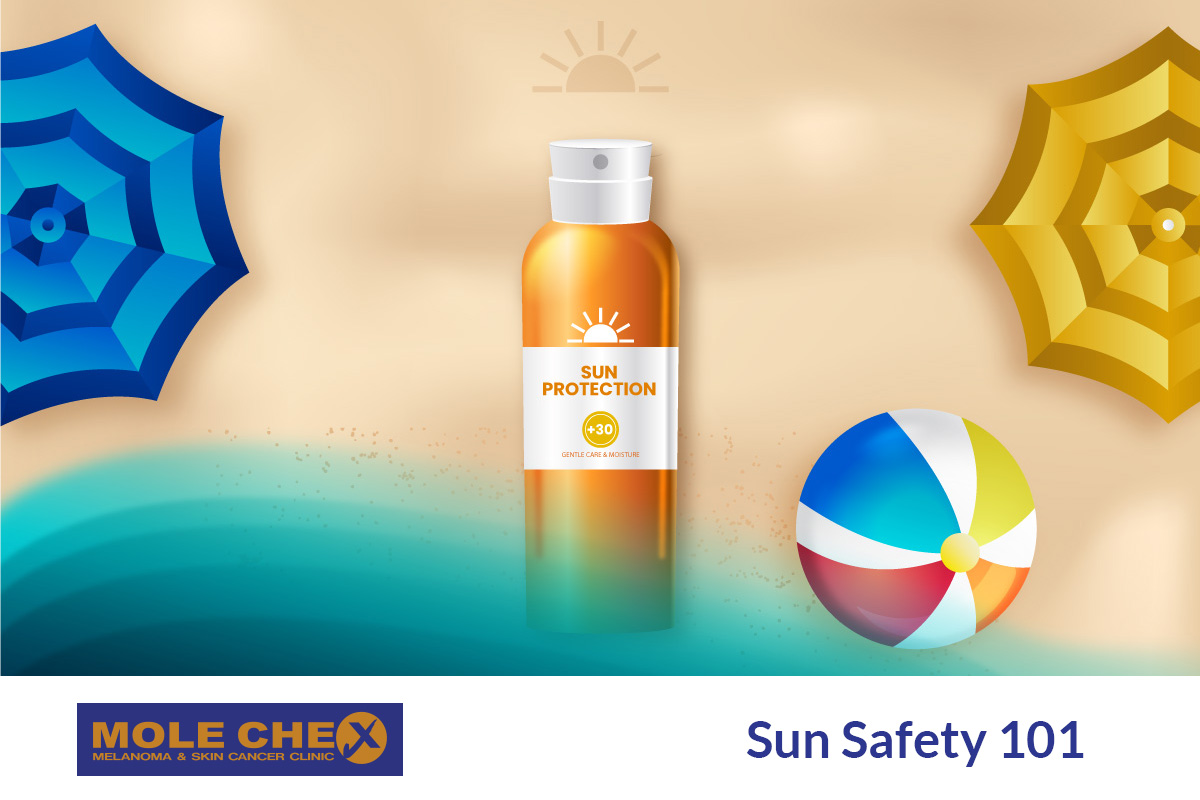Sun Safety 101: Protecting Your Skin in Every Season

Protecting your skin aka. sun safety isn’t just for summer vacations. Do know that the sun’s harmful ultraviolet (UV) rays can affect your skin throughout the year, regardless of the season, whether it’s a bright summer day or a cloudy winter afternoon, taking steps to protect your skin is essential to reduce the risk of sun damage and skin cancer. In this article, we’ll dive into the basics of sun safety to help you safeguard your skin in every season.
Understanding UV Radiation
UV radiation, or ultraviolet radiation, is a form of energy emitted by the sun. It’s composed of three types: UVA, UVB, and UVC. UVC rays are mostly absorbed by the Earth’s atmosphere and do not reach the surface. However, UVA and UVB rays are of significant concern as they can penetrate the atmosphere and impact our skin.
- UVA Rays: These rays have a longer wavelength and can penetrate deeper into the skin. They are a major contributor to premature aging and are linked to the development of wrinkles, fine lines, and age spots. UVA rays can also contribute to skin cancer.
- UVB Rays: UVB rays have a shorter wavelength and are responsible for causing sunburn. They affect the outermost layers of the skin and play a key role in the development of skin cancer. Prolonged exposure to UVB rays is especially risky.
Exposure to UVR
Excessive exposure to UV radiation can lead to various health issues, including:
- Sunburn: UVB rays are responsible for sunburn, which can cause redness, pain, and peeling. Severe sunburns can increase the risk of skin cancer.
- Premature Aging: UVA rays contribute to premature aging by breaking down collagen and elastin fibers in the skin, leading to wrinkles, sagging, and loss of elasticity.
- Skin Cancer: Both UVA and UVB rays can damage the DNA in skin cells, increasing the risk of skin cancer. Melanoma, basal cell carcinoma, and squamous cell carcinoma are the common types.
- Eye Damage: UV rays can harm your eyes, leading to conditions like cataracts, photokeratitis (sunburn of the cornea), and pterygium (growth on the eye’s surface).
- Suppressed Immune System: Excessive UV exposure can weaken the immune system’s ability to defend against skin infections and other health issues.
Understanding the dangers of UV radiation highlights the importance of consistent sun protection, regardless of the season. Even on cloudy days, UV rays can still penetrate through the clouds and affect your skin. By adopting sun safety practices and being proactive in protecting your skin from UV radiation, you can significantly reduce your risk of sun-related damage and maintain healthy skin throughout the year.
Sun Safety Tips for Every Season
🌞 Summer
- Apply a broad-spectrum sunscreen with at least SPF 30 before heading outdoors.
- Stay hydrated to prevent dehydration caused by sun exposure.
Seek shade during peak sun hours (10 a.m. to 4 p.m.) to reduce direct sun exposure.
Wear protective clothing such as wide-brimmed hats, sunglasses, and lightweight, long-sleeved shirts and pants. - Hydrate regularly to prevent dehydration caused by sun and heat.
🍂 Fall:
- Continue using sunscreen, as UV rays remain strong during autumn.
- Don’t let cooler temperatures fool you; continue using sunscreen as UV rays are still strong.
- Be cautious of UV reflection off surfaces like water, concrete, and snow, which can increase exposure.
- Keep your skin moisturized to prevent dryness and maintain its protective barrier.
☃️ Winter:
- Cover your skin with warm clothing, gloves, and a scarf to shield from the wind and cold.
- Apply sunscreen to exposed skin, even on overcast days, as UV rays can still penetrate clouds.
- Protect your lips with a lip balm containing SPF to prevent sunburn and chapping.
🍃 Spring:
- Renew your sun safety routine as the sun’s intensity increases with the changing season.
- Regularly examine your skin for any changes or new spots, and seek professional evaluation if needed.
Consistency is the key when it comes to sun safety. Regardless of the season, always prioritize protecting your skin from the harmful effects of UV radiation. By adopting these sun safety practices, you’ll help reduce your risk of skin damage, premature aging, and the development of skin cancer. Remember, healthy skin is a reflection of responsible sun care throughout the year.
Sun Safety Practices
- Choose the Right Sunscreen: Opt for a broad-spectrum sunscreen with SPF 30 or higher. Apply it generously to all exposed skin and reapply every two hours.
- Seek Shade: When outdoors, look for natural shade under trees, umbrellas, or wear protective clothing.
- Wear Sun-Protective Clothing: Lightweight long-sleeved shirts, pants, sunglasses, and wide-brimmed hats provide an extra layer of protection.
- Practice Eye Protection: Shield your eyes with sunglasses that offer 100% UV protection to reduce the risk of cataracts and other eye conditions.
Conclusion
Sun safety should be a year-round habit to maintain healthy skin and reduce the risk of skin damage and cancer. Regardless of the season, adopting sun protection measures is essential. By incorporating these practices into your daily routine, you’ll not only enjoy the outdoors but also safeguard your skin’s long-term health. Remember, a little effort in sun safety can go a long way in preserving your skin’s natural radiance and well-being.
Interested in learning more ? Read other article :



